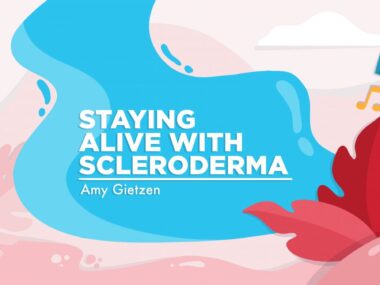Doctors’ lack of knowledge a hurdle in juvenile scleroderma diagnosis
In survey, caregivers highlight key barriers to diagnosis, treatment
Written by |

Caregivers of children with juvenile scleroderma cited a lack of knowledge about the rare disease within the medical community as the primary barrier to a proper diagnosis and treatment, according to a new survey study.
For more than a quarter of the children, it took more than a year from the first symptoms to get a correct diagnosis. Misdiagnoses — ranging from allergies to eczema to a congenital overgrowth disorder — were commonly reported.
Other major hurdles reported by almost all respondents included finding reliable information about scleroderma — especially regarding pediatric patients — juggling work and the child’s healthcare needs, side effects of medications, and balancing care and school.
“Identifying key care barriers will help direct efforts to address needs, reduce disparities in care, and improve patient outcomes,” the researchers wrote, noting that delays in diagnosis and treatment “have been associated with more persistent disease activity, higher damage scores, and higher relapse rates.”
The survey study, “Barriers to care in juvenile localized and systemic scleroderma: an exploratory survey study of caregivers’ perspectives,” was published in the journal Pediatric Rheumatology.
Wrong diagnosis common for many children with scleroderma
Juvenile scleroderma is a rare type of childhood scleroderma. Most cases are characterized by localized hardened patches of skin, particularly on the arms, legs, or trunk (torso). In more severe cases, the disease can affect organs throughout the body — this is known as systemic scleroderma — including the heart, kidneys, and blood vessels. In some children, these symptoms can be life-threatening.
Late diagnoses are common, with reported wait times of up to three years. Resulting delays in treatment have been linked to more and lasting disease activity, more tissue and organ damage, and more relapses.
The objective of this study, conducted as an online survey, was to investigate the obstacles caregivers encounter when attempting to access specialized care and treatment for children with juvenile scleroderma.
“This information could then guide future efforts to develop effective interventions to reduce diagnostic and treatment delays,” the researchers noted.
The survey was aimed at caregivers, defined as adults with legal custody of the child patient. A total of 69 caregivers responded to the survey: 62 mothers, six fathers, and one grandmother.
The children were diagnosed at a mean age of 8.7 years, with 38 having localized scleroderma and 31 with systemic disease. Most were female (80%), and more than half were non-Hispanic white patients (55%). About 43% identified as an ethnic minority group, among them Hispanic white, non-Hispanic Black, Asian, Hispanic Black, and Hispanic Native American individuals.
Most patients (87%) lived in families with at least one college-educated person, had private insurance (75%), and spoke English as their main language (86%). Almost half of the families (46%) had an annual household income of at least $100,000.
According to caregivers, the most common barrier to diagnosis and treatment was scant knowledge about scleroderma by medical providers. It was rated as a significant problem by 39% of respondents, a problem by 28%, and a slight problem by 22%.
Patients’ families commented that there was a “lack of awareness” of juvenile scleroderma within the medical community. Many caregivers of localized patients heard healthcare providers wrongly say the disease “will naturally go away or burn out,” or that “it is a harmless/cosmetic condition.” Other caregivers were told “there is no need to treat with medications,” and “medications are dangerous or harmful.”
Consistently, families described how their child was misdiagnosed, which led to delays in treatment and the need for additional medical opinions before reaching a diagnosis. Misdiagnoses included eczema, allergy, a skin pigment condition called vitiligo, and hemihypertrophy, which is the overgrowth of one side of the body.
One family reported being “accused of Munchausen,” which referred to Munchausen by proxy, a syndrome wherein parents purposely harm their children for attention and sympathy.
Several families were told the disease would “burn out” even after diagnosis, so no treatment was needed.
Income, race disparities seen in path to scleroderma diagnosis
Other major barriers included finding reliable information about the condition (77%), balancing work and the child’s healthcare needs (80%), medication side effects (80%), and balancing school and care (83%). Identifying effective medications (59%), long distances to specialist visits (52%), and long wait times for specialist appointments (64%) also were cited as major barriers.
Regarding social determinants of health, an income of less than $100,000 correlated with two hours of travel time or more, long distances to appointments, a minimum high school household education, and a lack of transportation. Hispanic ethnicity significantly correlated with long specialist wait times, problems affording medications, and difficulties finding effective drugs.
Almost half of the localized (45%) and systemic patients (42%) visited multiple providers before diagnosis. Dermatologists diagnosed most localized cases (63%), while rheumatologists diagnosed most systemic patients (74%).
For 28% of juvenile scleroderma patients, a diagnosis took more than a year after symptoms onset, which occurred more often among localized cases than systemic (34% vs. 19%). No associations were seen between patient characteristics and diagnostic delays.
The major problem highlighted was the lack of knowledge of scleroderma within the general medical community. … Identifying key care barriers will help direct efforts to address needs, reduce disparities in care, and improve patient outcomes.
Nearly all (94%) of the children diagnosed with scleroderma received systemic treatment. However, having symptoms for more than a year before treatment was more frequent in localized versus systemic patients (42% vs. 29%).
“Caregivers of children with [juvenile scleroderma] reported numerous common barriers to the diagnosis, treatment, and ongoing care,” the team concluded. “The major problem highlighted was the lack of knowledge of scleroderma within the general medical community.”
“Given that most of the caregiver respondents to the survey had relatively high socioeconomic status, additional studies are needed to reach a broader audience,” the team added.







